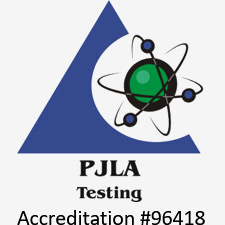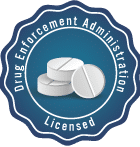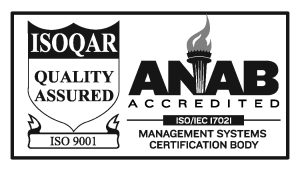The integrity of pharmaceutical and medical products depends on the detection and control of contamination. Even the smallest contaminant can undermine patient safety, compromise performance, and trigger costly recalls. Preventing these issues requires contamination detection to be accurate, meaning contaminants must be identified consistently, distinguished from background noise, and measured at the right thresholds. A variety of lab methods have the capabilities to deliver accurate contamination detection, ensuring contaminants are not only identified, but correctly classified and quantified. From FTIR-microscopy to SEM-EDX and mass spectrometry, laboratories now have access to techniques that can overcome the limitations of traditional approaches to contamination detection like optical microscopy and gravimetric testing, delivering a far more accurate picture of contamination.
How Accuracy Shapes Contamination Detection
Accuracy determines whether the results of contamination detection can be trusted. Without it, manufacturers face the risk of false negatives, where a harmful contaminant goes unnoticed, or false positives, which waste time and resources investigating issues that are not real. Four interrelated qualities ultimately determine the accuracy of contamination detection:
- Sensitivity: the ability to detect contamination at very low concentrations, sometimes at parts per billion or trillion, so no meaningful contaminant escapes notice.
- Specificity: the means to distinguish genuine contaminants amid background interference, reducing the risk of false alarms caused by harmless substances.
- Reproducibility: the consistency of results across repeated tests or laboratories, ensuring findings are not random or dependent on a single run.
- Correctness: the degree to which the findings align with the actual or reference value, supporting the validity of the reported contamination levels.
Integrating these four qualities helps analytical methods to deliver reliable, trustworthy results because each one addresses a specific type of error, such as missed contaminants, false alarms, inconsistent data, and inaccurate measurements.
Methods For Achieving Accurate Contamination Detection
FTIR-Microscopy
How it works:
Fourier Transform Infrared Spectroscopy (FTIR) records how molecules absorb infrared light, producing unique absorption patterns that act as molecular fingerprints. When combined with microscopy, it allows for the analysis of contaminants at the microscopic scale, capturing chemical information from specific regions of the sample. This makes it a powerful tool for detecting and characterizing organic contamination with precision.
What it detects:
FTIR-microscopy is particularly effective for identifying organic contamination. It can reveal polymer fragments, residues from cleaning processes, adhesives, lubricants, oils, and thin surface films.
Benefits:
- Provides rapid analysis without compromising accuracy
- Preserves samples through non-destructive testing
- Requires only minimal preparation, with most samples ready for direct analysis
- Maintains spatial context by targeting specific regions of a sample
How it boosts accuracy in contamination detection:
- Distinguishes real contaminants from background materials, improving the specificity of the results
- Detects even very small residues, increasing sensitivity and reducing the chance that contamination goes unnoticed
- Links chemical identity to its exact location, confirming that findings indicate genuine contamination
- Produces consistent matches against spectral libraries, strengthening reproducibility across repeated analyses
SEM-EDX
How it works:
Scanning Electron Microscopy (SEM) uses a focused beam of electrons to scan the surface of a sample, producing high-resolution images that reveal the size, shape, and surface features of particles. As the electron beam interacts with the sample, atoms within the contaminant materials emit X-rays. Energy Dispersive X-ray Spectroscopy (EDX) measures these X-rays to identify the elements present. Together, SEM and EDX allow laboratories to link a contaminant’s morphology to its elemental composition, providing both visual and chemical insights into contamination.
What it detects:
SEM-EDX excels at detecting inorganic particulates such as metals, oxides, silica, and glass. It can also differentiate whether a particle is embedded in a material or lying on its surface.
Benefits:
- Reduces misidentification by combining morphological and chemical data in a single analysis
- Delivers detailed visual and compositional information on particulate contamination
- Involves only minimal sample preparation, making contamination detection faster and more efficient
How it boosts accuracy in contamination detection:
- Confirms particulate morphology and composition, improving correctness through aligning results with the true contaminant
- Distinguishes genuine contamination from background material, enhancing specificity and decreasing the chance of false positives
- Supports reproducibility due to the delivery of consistent data across repeated analyses
Mass Spectrometry
How it works:
Mass spectrometry (MS) ionizes molecules and separates them according to their mass-to-charge ratio, producing distinctive spectral patterns that reveal the chemical identity of the compounds present. Integrating MS with separation techniques, such as gas chromatography-mass spectrometry (GC-MS), liquid chromatography-mass spectrometry (LC-MS), or inductively coupled plasma mass spectrometry (ICP-MS), expands its capability, allowing both molecular and elemental contaminants to be analyzed with high sensitivity. Such combinations ensure laboratories can carry out highly sensitive and quantitative analyses across a wide range of sample types including biological fluids, pharmaceutical formulations, environmental samples, and complex material matrices.
What it detects:
MS can characterize numerous contaminants, such as solvent residues, leachables, extractables, degradation by-products, and elemental impurities, positioning it as a key technique for residue analysis, particularly in cases where contaminants are present at ultra-trace concentrations.
Benefits:
- Offers quantitative data that makes it well-suited for compliance reporting
- Provides unmatched sensitivity and specificity for detecting contaminants
- Reveals molecular structure through fragmentation data, helping to distinguish between similar compounds
How it boosts accuracy in contamination detection:
- Prevents false negatives by detecting contaminants at parts-per-trillion levels
- Minimizes misidentification with detailed molecular information
- Produces stable, repeatable measurements that ensure reproducibility
Contamination Detection Services Available at Jordi Labs
Accurate contamination detection is established with methods that not only identify contaminants but also clarify their characteristics. FTIR-microscopy, SEM-EDX, and mass spectrometry deliver distinct advantages, and if used in combination they produce a complete framework for analyzing organic residues, inorganic particulates, and ultra-trace impurities. Jordi Labs utilizes these techniques in contamination detection investigations. Applied under validated protocols, they help us deliver data that is precise, actionable, and regulatory-ready. Contact us today to learn how we can support your contamination detection and help you achieve accurate, dependable results.





